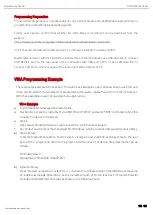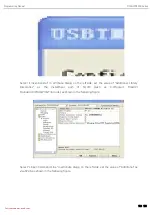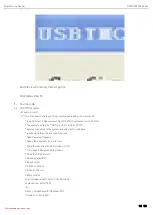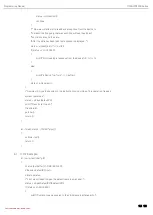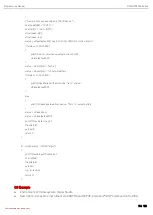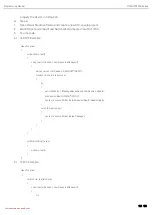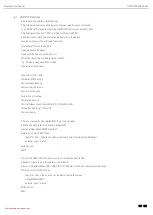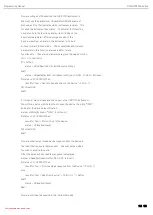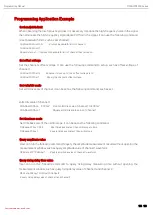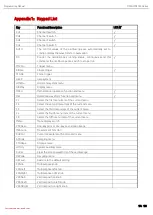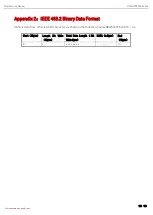
Programming Manual MSO/UPO2000 Series
153 / 156
Instruments.uni-trend.com
Programming Application Example
Set bandwidth limit
When observing the low-frequency signal, it is necessary to reduce the high-frequency noise in the signal,
then attenuate the high-frequency signal above 20 MHz in the signal. It can use the following command
to set bandwidth limit, such as set channel 1,
CHANnel1:BWLimit ON #turn on bandwidth limit of channel 1.
CHANnel1:BWLimit?
#query returns 1
,
it represents bandwidth limit of channel 1 has turned on.
Set offset voltage
Set the channel’s offset voltage, it can use the following command to setup, such as offset voltage of
channel 1,
CHANnel1:OFFSet 1V #channel 1 move up 1 V, then offset voltage is 1 V.
CHANnel1:OFFSet? #query the channel’s offset voltage.
Set volts/div scale
Set volts/div scale of channel, it can be set as the following command, such as set
volts/div scale of channel 1,
CHANnel1:SCALe 500 mV #set volts/div scale of channel 1 to 500 mV.
CHANnel1:SCALe? #query volts/div scale value of channel 1.
Set timebase scale
Set timebas scale of the oscilloscope, it can be set as the following command,
TIMebase:SCALe 0.005 #set timebase scale of the oscilloscope to 5ms.
TIMebase:SCALe? #query timebase scale of the oscilloscope.
Query amplitude value
User can run the following command to query the amplitude measurement results without opening the
measurement window, such as query amplitude value of channel 1 waveform,
MEASure:VPP? CHANnel1 #query amplitude value of channel 1 waveform.
Query rising delay time value
User can run the following command to query rising delay measuring time without opening the
measurement window, such as query rising delay value of channel 1 and channel 2,
MEASure:PDELay? CHANnel1, CHANnel2
# query rising delay value of channel 1 and channel 2.

